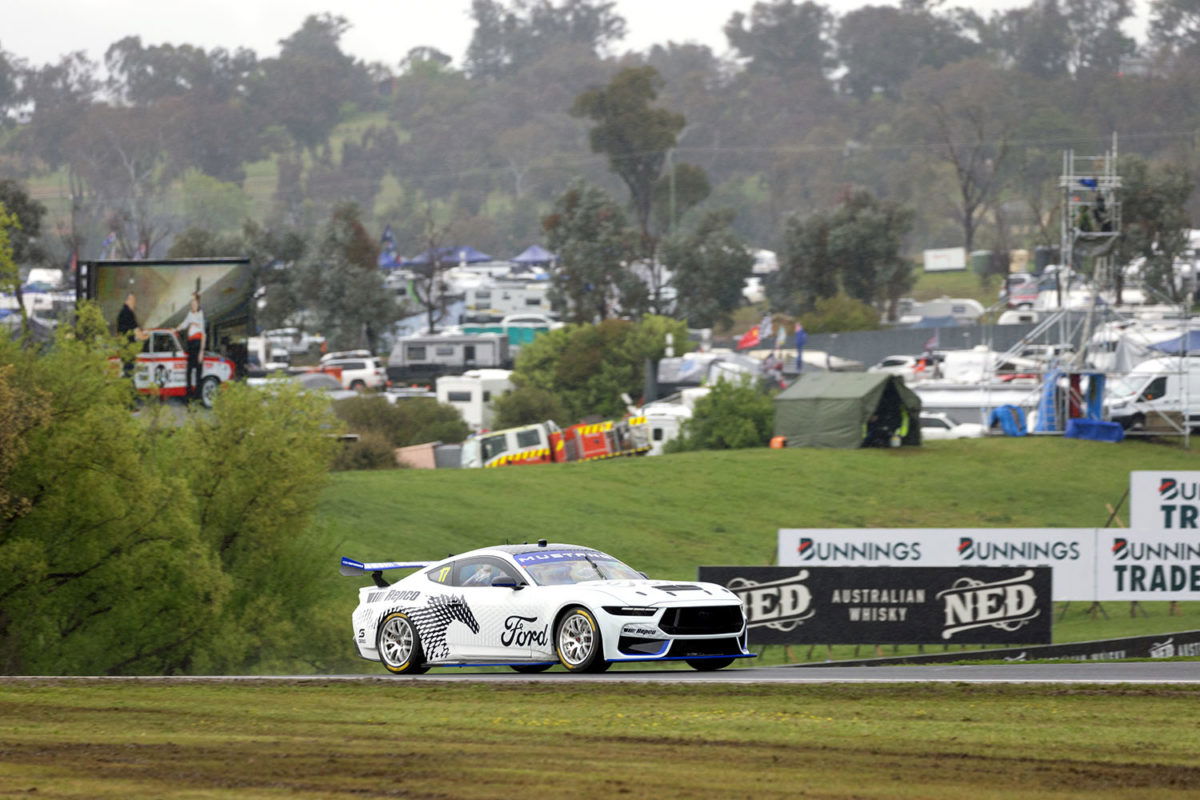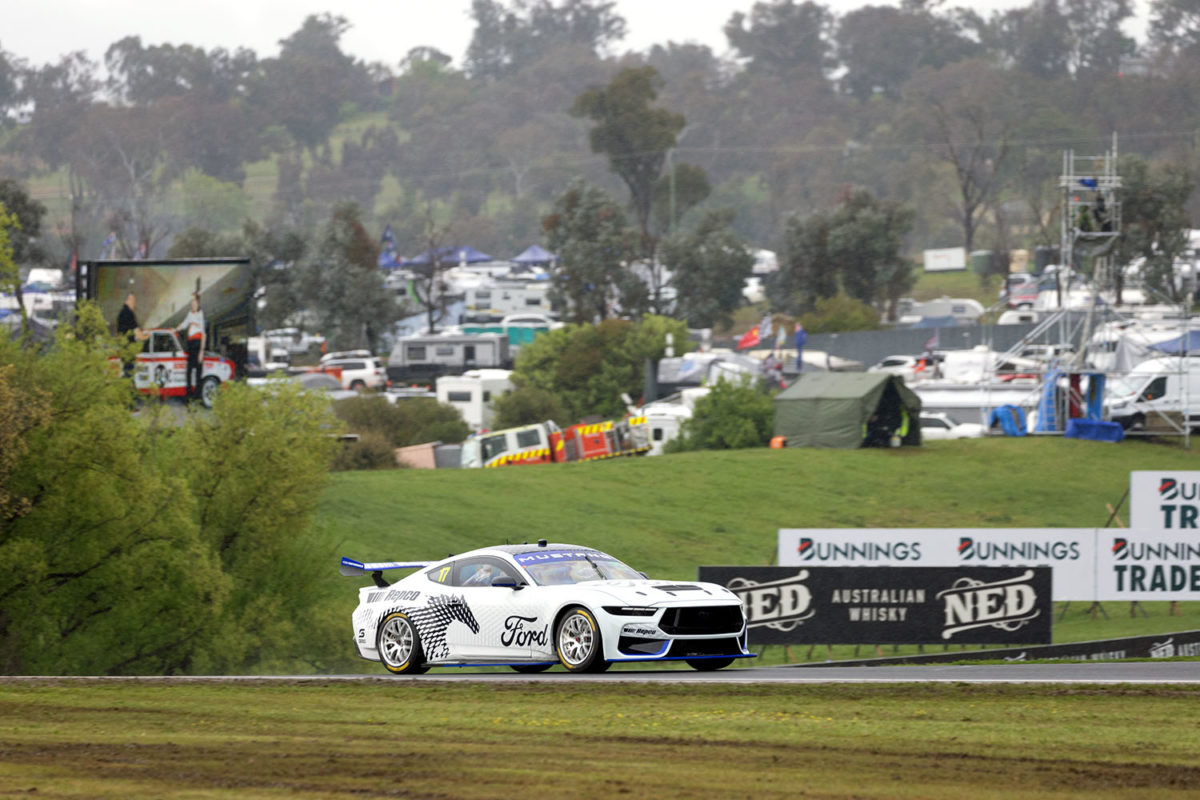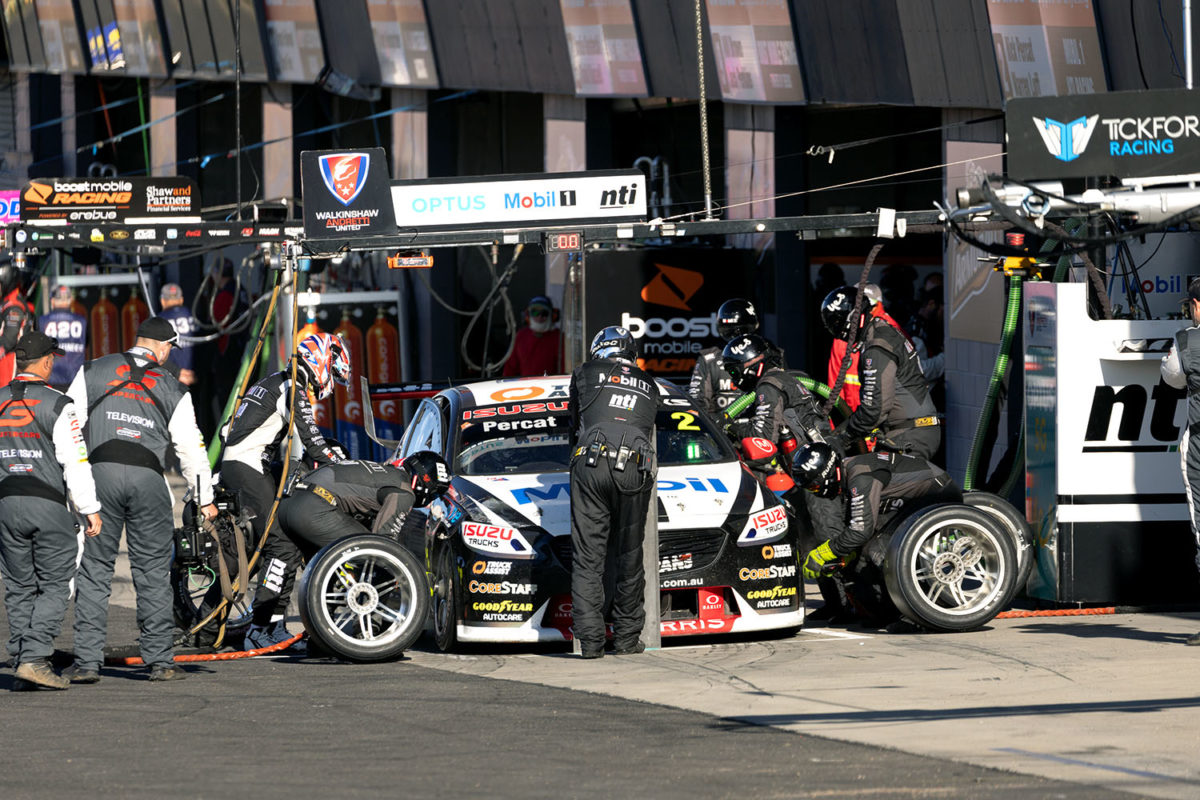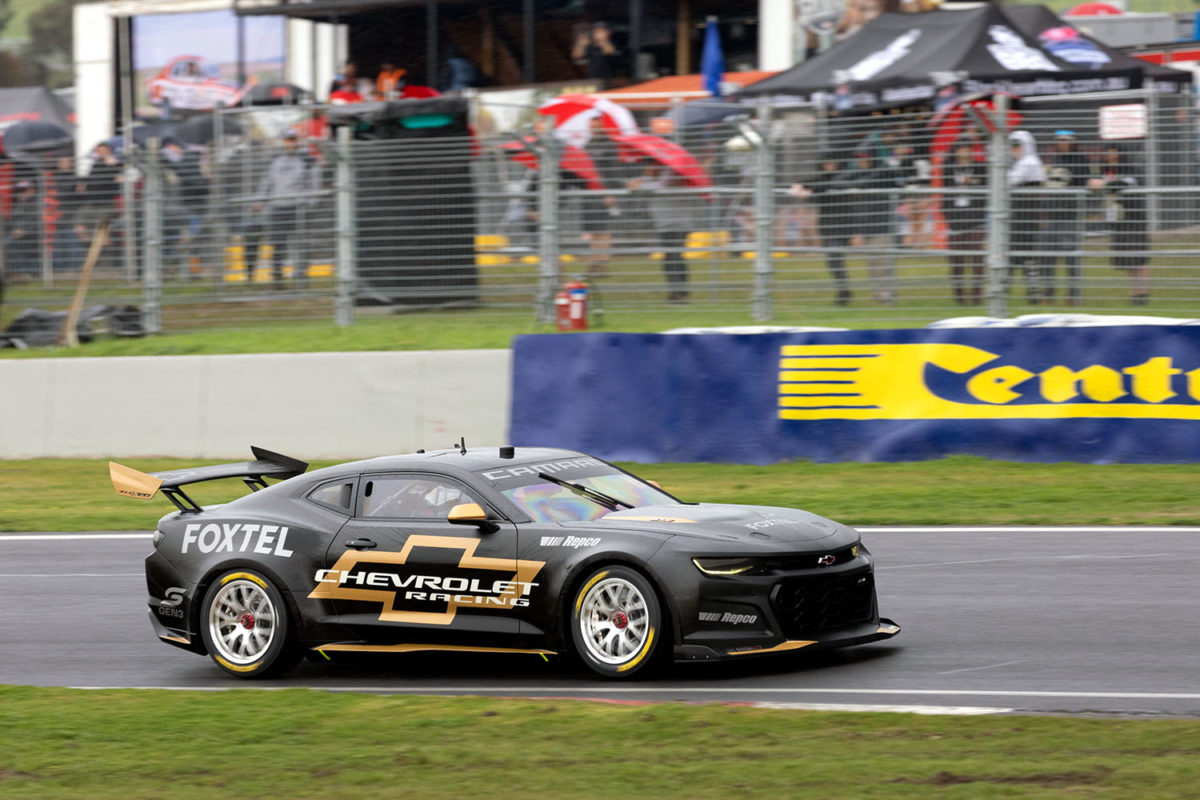

The new Gen3 Supercars are likely to have a significant effect on the rhythm of the Repco Bathurst 1000, depending on their fuel economy.
It was at the start of the Car of the Future (COTF) era, in 2013, when Supercars imposed seven compulsory pit stops on the field as a solution to the fuel economy deficit of the Mercedes and Nissans of the day.
After a decade of relative stability in the category’s technical platform, Gen3 is upon us.
Whereas the introduction of the transaxle was one of the more significant changes from Project Blueprint to COTF, the Xtrac unit is virtually one of the only carryover items in the 2023 ruleset.
As for what is different, most of it points to an improvement in fuel economy and/or fuel range.
Firstly, cars will weigh less.
A precise minimum weight is understood to be as yet unfinalised, although it is thought that the range of possible figures is around 10kg.
According to one Erebus Motorsport video piece, car and driver minimum will be around 1250kg, as compared to 1400kg in the 2022 regulations (consistent with statements that power-to-weight would be roughly the same as before).
Secondly, downforce has been slashed.
Supercars Head of Motorsport Adrian Burgess has claimed a cut in the vicinity of 63 to 64 percent relative to that which was produced by the Gen2 cars at the end of their life in the Championship.
Less downforce means less drag, and hence less fuel usage, all other things being equal.
How the engines themselves fare on economy with respect to their predecessors has been less of a talking point, although reduced fuel consumption was a stated aim of the project when key details were revealed in October 2020. Regardless, the engines have been paritised with respect to fuel consumption.
Then there is the fuel itself.
After 14 years of E85, Supercars is expected to switch this year to E75, with the non-ethanol component to be partially synthetic.
The change will presumably reverse some of the roughly 30 percent blowout in fuel usage when E85 was introduced.
Whereas five pit stops was the norm as recently as 2008, the winners took six in 2011 and 2012, before the changeover from Blueprint to COTF brought with it reduced fuel cell capacity from 120 litres to 111.

On the subject of fuel cells, they have grown to 133- to 134-litre units with Gen3, which has no impact on economy but does obviously increase fuel range by about 20 percent, all other things being equal.
That 20 percent increase alone could bring the seven-stop minimum down to six, although it is worth noting that seven stops in fact affords teams a level of flexibility given fuel range at Bathurst without Safety Car intervention and/or rain is usually 23 laps. Neatly divided into the 161-lap race distance and that is seven stints (seven times 23 is exactly 161), meaning six stops (although such a crude calculation does ignore fuel usage on the lap to the grid and the formation lap).
Depending on the impact of the weight saving, the downforce reduction, the inherent consumption of the engines themselves, and the fuel blend, we could even be looking at five-stoppers which have not been seen for a decade-and-a-half.
Supercars announced race formats just over a week ago, including which races would feature refuelling, but did not specify the magnitude of total fuel drops – in the case of 200km and 250km races – or amount of compulsory fuel stops – in the case of the enduros, at Sandown and Bathurst.
A look at Schedule A2 of the 2023 Operations Manual shows that those figures are indeed still TBAs.
The category’s Motorsport department may well have an estimate of fuel economy, but theory and the real world are two different things, and most teams have technically not in fact tested yet (that is, most have officially conducted shakedowns only) hence the TBAs.
What one can predict with a high level of confidence is that the CPS requirement for the Bathurst 1000 will be no more than seven.
If it drops, even only to six, what changes?
In short, a lot.

What one must consider is that a six-stop minimum implies a fuel range of 27 laps or more (assuming a one-stop safety margin, as was built into in the seven-stop minimum which applied in 2022).
27 so happens to be half of 54, which is the minimum required driving distance.
That is, if random elements such as Safety Cars fall kindly, an entry can get its co-driver’s seat time out of the way in just two stints rather than three. A complication here is the double-stack issue, but that is a problem which could be solved for a car without pit priority by fuel-saving somewhere if 27 laps is indeed already tight.
Working backwards from the finish, we have become used to seeing primary drivers triple-stinting home, something which was not so practical in the pre-E85 era of four- or five-stop races, nor necessarily safely within the present day three-and-a-half continuous driving time hours limit.
However, a trio of 27-lap stints is less than three-and-a-half hours’ worth of driving at modern-day race pace, if there are no particularly long Safety Car periods.
If fuel range gets much longer, then a triple-stint home does become risky with respect to driving time limits, as well as physically difficult, but the chance of clearing co-drivers in only two stints becomes even greater.
Supercars’ annual visit to Mount Panorama might be still almost eight months away, but what we find out about fuel economy in the coming days and weeks is set to shape the Great Race in a significant way.




















Discussion about this post